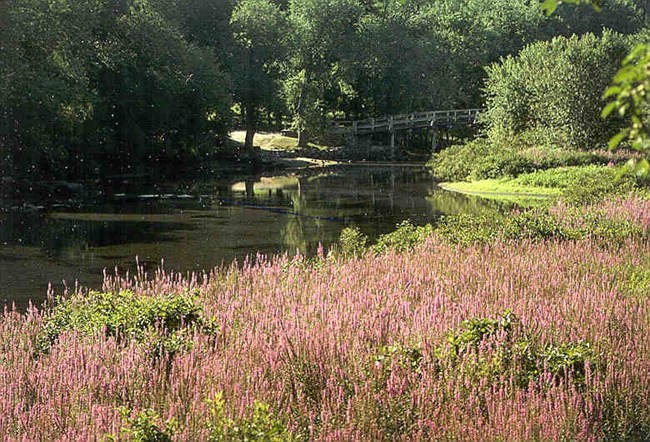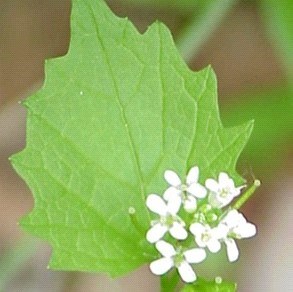Last updated: November 2, 2020
Article
Invasive Species at Minute Man NHP

NPS photo
Invasive plants typically have origins in places other than where they infest. In many cases, invasive and non-native plants present in New England are native to the Eurasian continent. The plants are introduced to new areas when they are brought intentionally for ornamentation or agriculture, or accidentally as seed “hitchhikers”. Areas with disturbed natural vegetation are more readily populated by these invasive newcomers. Because New England has been extensively farmed for hundreds of years, it is a prime spot to become host to invasive species.
In the summer, one of the most prolific invasive plants present in the park is purple loosestrife, which covers wetlands within the park in a purple haze. While visually appealing, this plant is considered invasive because it aggressively spreads, and competes with native species. Through competition for sunlight and soil, it diminishes the number of native plants within an area, like native cattails. By choking out competition, the invasive can multiply and take over a landscape.
Two other invasive plants found within the park are black swallowwort and garlic mustard. Each of these plants has a native counterpart but can be deadly to the insect larvae that hatch and eat the leaves. In fact, many native animals cannot eat introduced plants. Without this natural source of control, the invasive can spread. A landscape dominated by an invasive plant has a lower capacity to support native flora and fauna—from other plants, to large mammals. The landscape is altered on a large scale.

NPS photo
Goutweed
Wild Chervil
Black Swallowwort
Spotted Knapweed
Colt’s-foot
Japanese Barberry
Garlic Mustard
Japanese Honeysuckle
Asian Bush Honeysuckle
Morrow’s Honeysuckle
Oriental Bittersweet
Winged Burning-bush
Wintercreeper
Leafy spurge
Black Locust
Purple Loosestrife
Greater Celandine
Japanese knotweed
Creeping Buttercup
Glossy and Common Buckthorn
Multiflora Rose
Norway Maple
Sycamore Maple
White Turtlehead
Tree-of-Heaven
Porcelainberry
Yellow Flag Iris
Japanese stilt-grass
Phragmites






